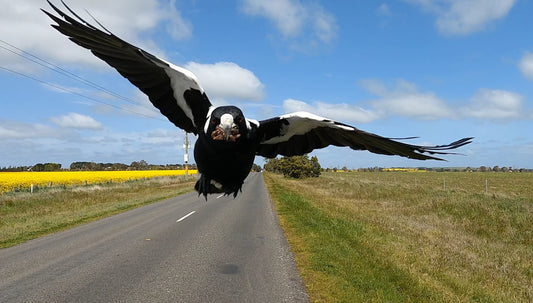You have three contact points with your bike - the handlebars, the seat and pedals. This post looks at getting your pedals right.
The measure of success in choosing or adjusting each of these contact points is that you don’t have to think about it anymore. Once you’ve made the right choice, it should just work, keeping you comfortable and fast. Pedals are probably the most complicated contact point from a technical perspective because there are so many options!
Pedals come in three basic types: flats, toeclips and clipless. ‘Flat’ pedals (also known as platform pedals) are pretty standard. These are pedals without any straps, clips or mechanisms for holding on to your foot. They can be ridden with any standard pair of shoes. They’re typically plastic or metal with two flat sides to put your feet on and some little bumps or pins to stop your foot sliding off. A great example is the X-tech Alloy BMX Platform Pedal.

X-Tech Alloy BMX Platform Pedal available in Black and Silver from Reid Cycles
Next comes ‘toeclips’. Toe clips are straps that attach to the front of flat pedals to hold your foot on. They’re usually a band of metal or plastic that loops around the toe of your shoe and then nylon or leather straps that wrap around your shoe to hold it down to the pedal. These pedals were the first kind of ‘foot retention’. If you look at old photos of professional cyclists prior to the 1970’s they’re all riding with toeclips. The advantages of toeclips is that your feet are held in place pretty well, but you don’t need specific shoes and they’re very inexpensive.
Finally, the hero of our story is the ‘clipless’ pedal. Even though you ‘clip’ into these pedals, they’re called clipless because there are no toeclips or straps to worry about. Make sense? These are better than toeclips because the foot retention is stronger but it’s also much easier to ‘unclip’ and release your foot when stopping. Good cycling shoes are also more comfortable and efficient for pedalling. They may only give you a 10% boost over regular shoes but that’s a 10% bonus on every single pedal stroke you make. You’ll notice it most when you’re climbing hills; the stiffer shoes transfer all of your power more efficiently. The climbs will be easier (or faster), and that’s what you want!
These cycling shoes will have a ‘thing’ on the sole that clicks into the pedal. This thing is called a cleat. The thing that it clicks into on the pedal is called a ‘cleat binding’. The cleat binding binds the cleat (and therefore your foot) onto the pedal. To release your foot, your turn your heel out and away from the bike to release the binding.
Clipless pedals come in two basic sorts, which are generally categorised as mountain bike pedals or road bike pedals.
Mountain bike pedals use a small, two-bolt cleat that is recessed into the sole of the shoe. This means that the cleat doesn’t stick out of the bottom of the sole, allowing you to walk around more easily. It also means that for racing disciplines like cross-country mountain biking or cyclocross, you can put your foot down and get traction in mud, grass and gravel. For this reason, mountain bike style pedal systems are often favoured for cycle touring or commuting. The best known example is the Shimano SPD system. A great combination for commuting or touring would be the Shimano SH-XC30 shoes and M520 pedals.

Shimano M520 Pedal
Road bike pedals, by contrast, use a much larger, three-bolt cleat. This larger cleat allows better peak power transfer but they’re more difficult to walk in. The larger cleat design doesn’t shed mud and grit the same way as the mountain bike cleats. The advantage, however, is that the larger cleat gives a broader pedalling platform. What this means is that when you’re hammering it on the road, there is less flex in the cleat and pedal, allowing more efficient power output. This is especially important in flat-out sprinting and powering through climbs. The Shimano SPD-SL system is a fantastic example of this type of pedal. An excellent combination for a road-racing bike might be the Shimano SH-R077 shoes and 105 PD-5700 pedals.
Cleats can be adjusted in several ways. First of all, the position of the cleat on the shoe is important. Your local bike shop or bike fitter can help you get the cleat in the right position relative to your foot for a comfortable, ergonomically correct position. You can also adjust the tension on the cleat bindings, making it easier or harder to pull your foot out. A looser setting is great to start out while a tighter setting is necessary for maximum power while sprinting or climbing.
And last but not least, SPD versus SPD-SL pedals; what’s the difference?
Shimano SPD pedals are the two-bolt, recessed, mountain bike style pedal system. They’re perfect for off-road riding, commuting, touring and other cycling applications where you might want to put your foot down or walk at some point. Shimano SPD-SL pedals are the three-bolt, road bike style pedal system where the cleat sticks out from the bottom of the shoe. These are perfect for road riding, faster commuting and other types of cycling where ‘walkability’ isn’t very important.
No matter which pedalling system works best for you, you should get it sorted out, set up right and then forget all about it in your enjoyment of cycling.
- Alexander Hender from Tenax Ride



